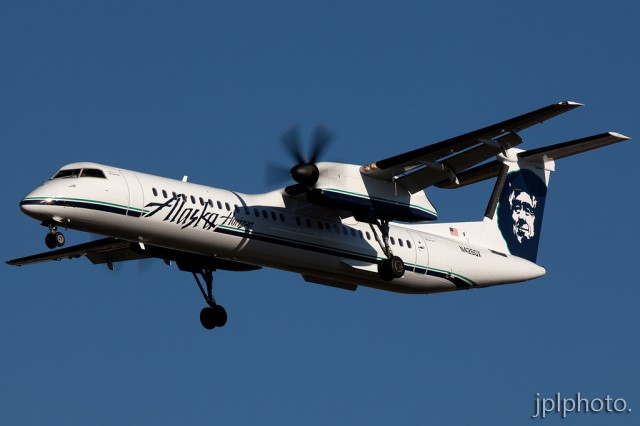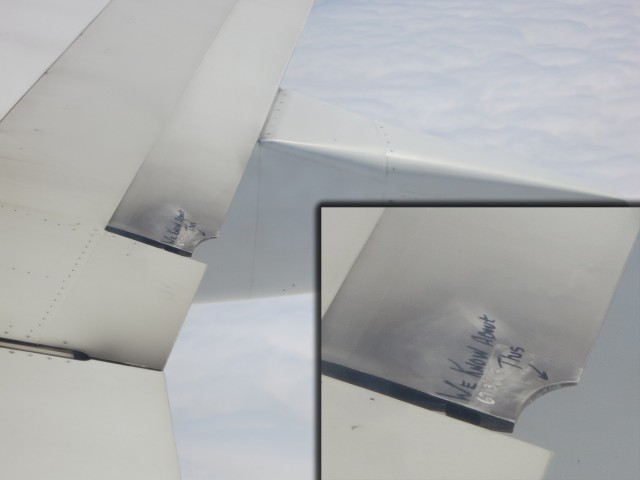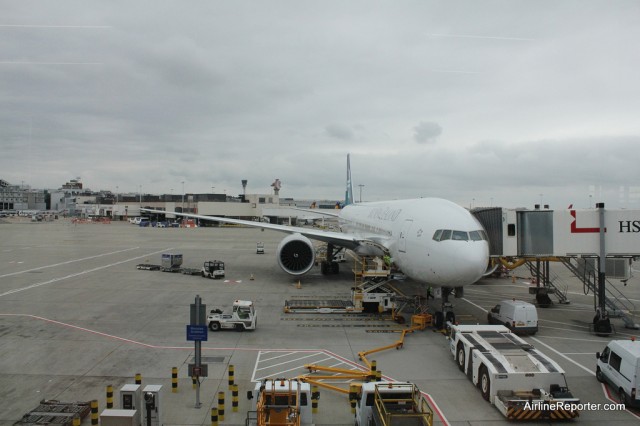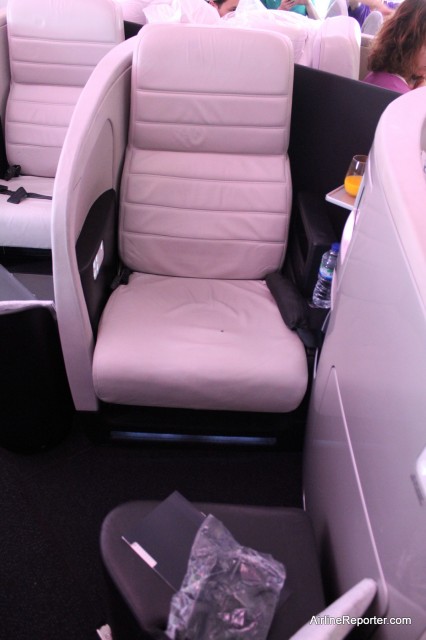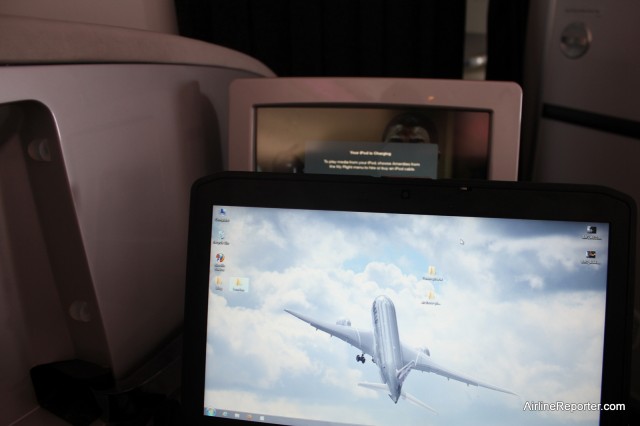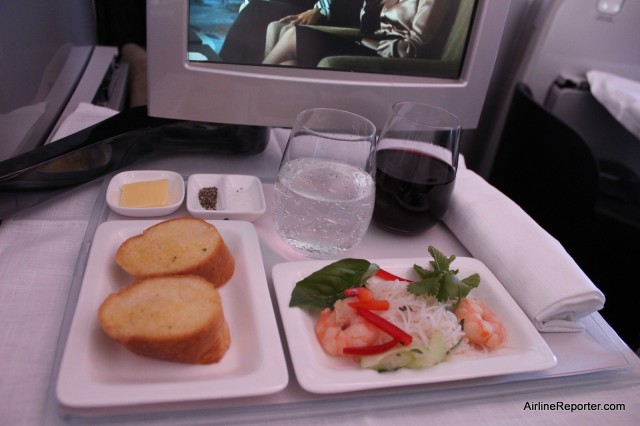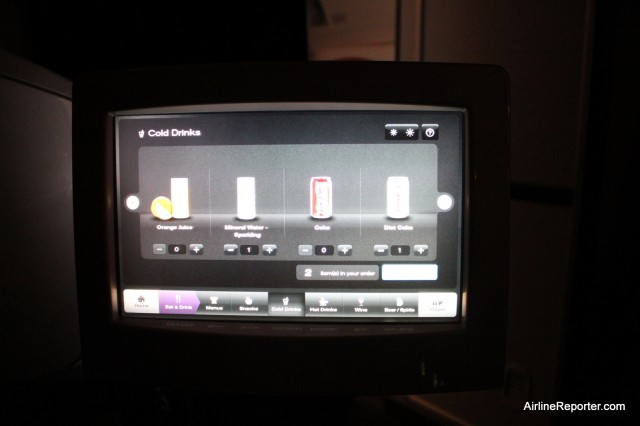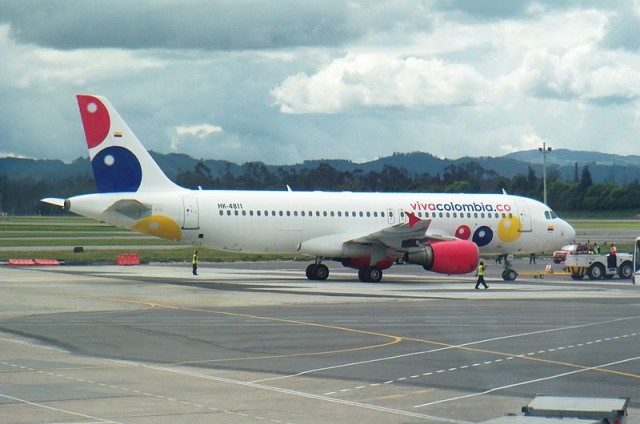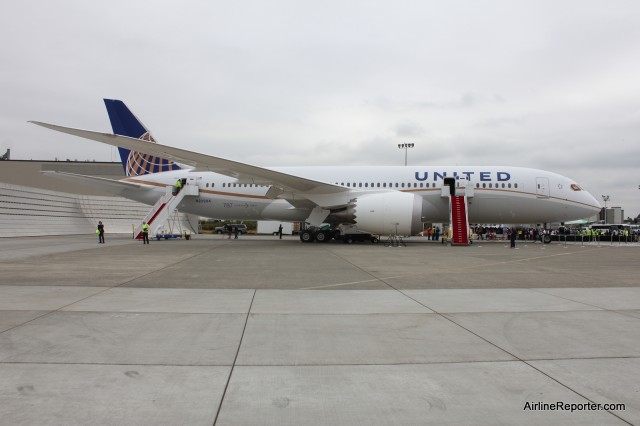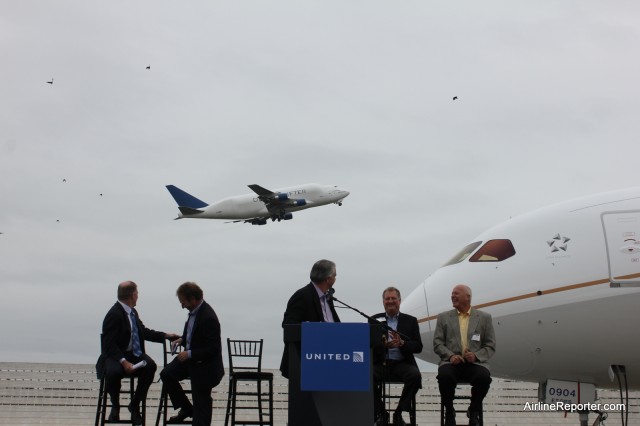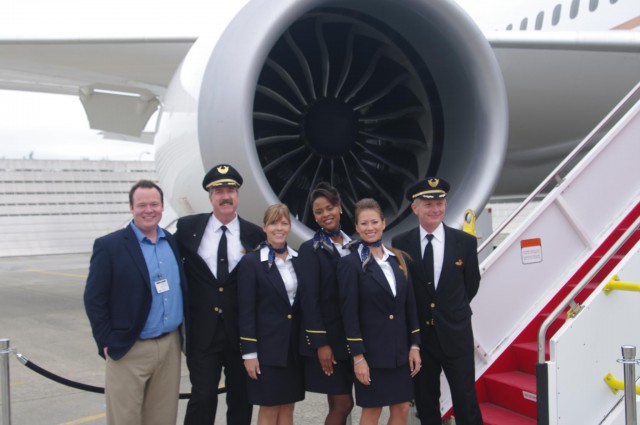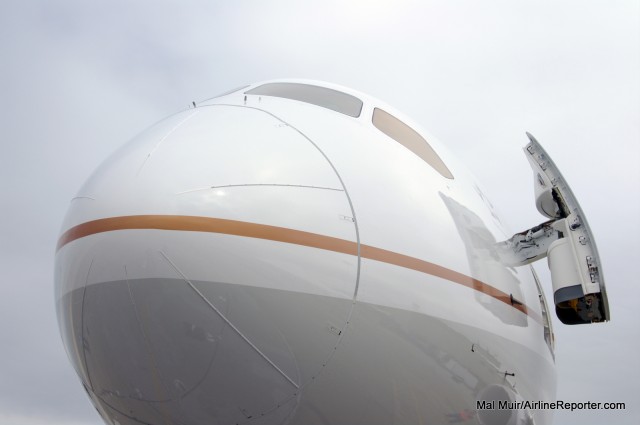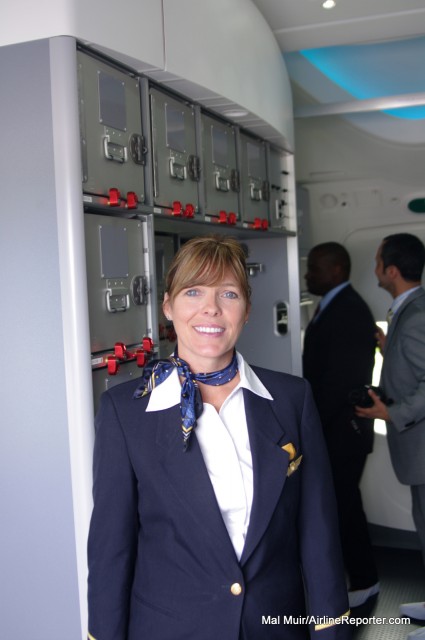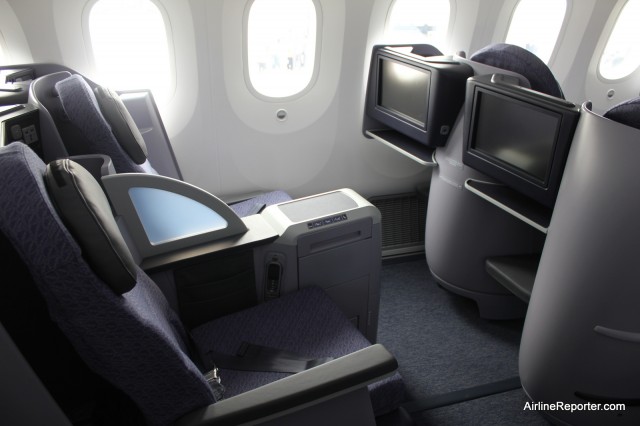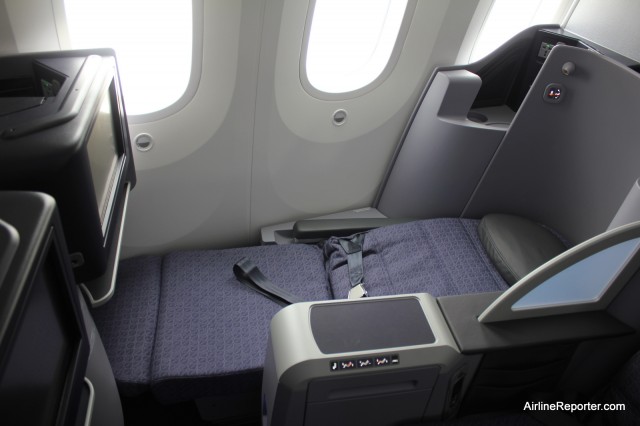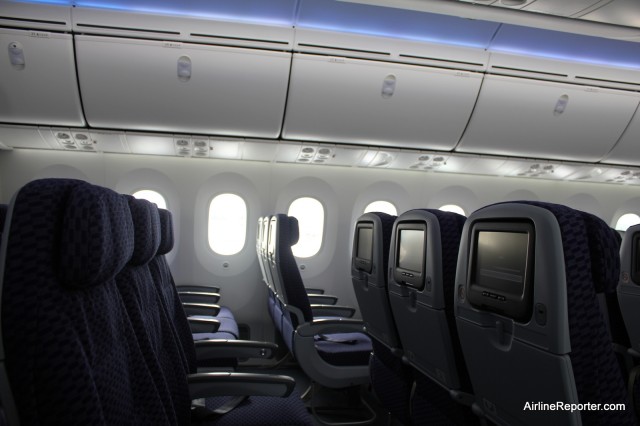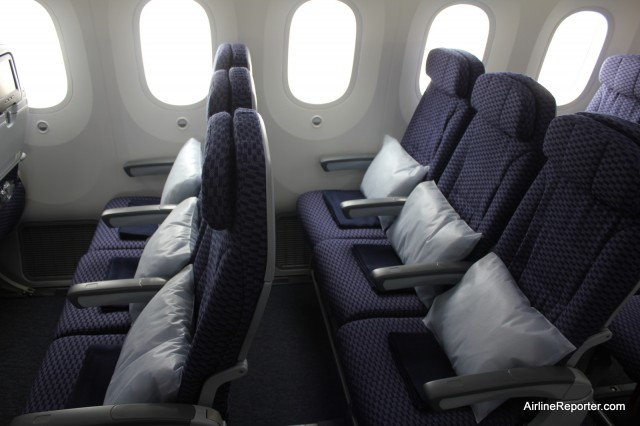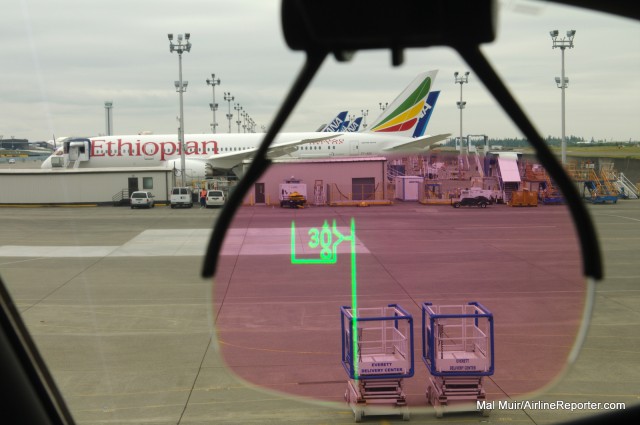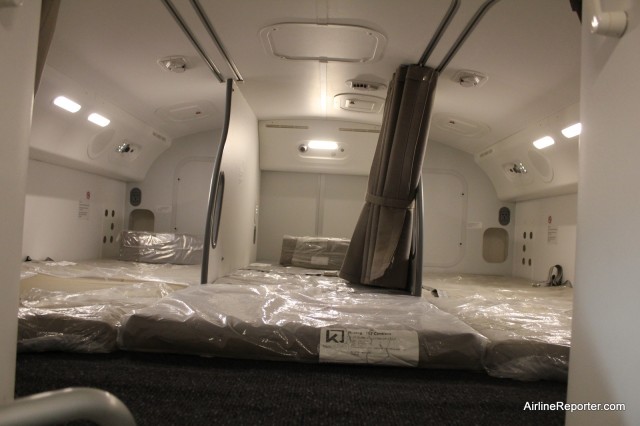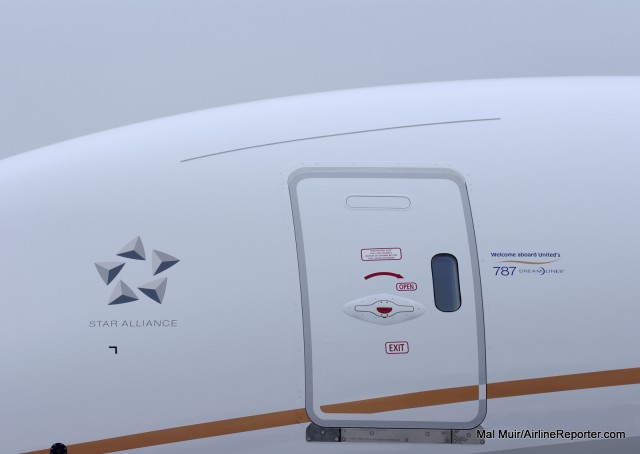If you are up for some more historical Boeing 727 fun, check out the launch brochure found on Airchive.com.
What a cruddy week for Alaska Airlines (and Horizon Air) in the press. First they get accused of mistreating an elderly man with a disability, then accused of flying around with broken airplanes twice and a flight has to make an emergency landing.
So far, two of the stories have been picked up around the world and put the Seattle-based airline in a negative light. Might there be more to these stories than just the sensational headlines? Well, of course.
The first story involves a passenger with a disability. If you read the story in full, no question it is a sad one and it seems like someone with Alaska probably dropped the ball. However, this story really got out of control. The man, who has late stage Parkinson’s had difficulty understanding the check-in and boarding process. Ticket agents tried to explain his bag was too large to take to the gate, but he was not able to understand. It turns out that the agents thought the man was drunk and the passenger never self identified as someone with a disability who needed special assistance and it is illegal for the airline to ask if someone has a disability. So, you have a person who appears to be drunk, they smell alcohol (which can be a side effect of the Parkinson’s or medication), what are they supposed to do? Turns out that when the man tried to go through security, he was told to go back to check in his bag and he ended up missing his flight.
Another passenger, who saw what was happening, tried to help the man and his companion, who had MS, but did not have much luck. He did what many people do, rant on Facebook, but his rant went viral. Part of his post stated that Alaska employees were “the worst of humanity,” and the media took over the story from there.
There were many interesting headlines on this one, playing up that the employees were the worst of humanity. My favorite comes from The Daily Mail with, Alaskan Airlines faces outrage as staff are accused of ‘being the worst of humanity’ for ‘ignoring 70-year-old Parkinson’s sufferer’
Wait. Alaskan Airlines? Which airline is that? Well, I know that The Daily Mail is much more known for their shocking headlines than journalistic integrity. Anyhow, Alaska seemed to handle the situation the best that they could after knowing what happened.
“First and foremost, we’ve determined that we could and should have handled this better and I apologize to our passenger on behalf of all of us at Horizon Air and Alaska Airlines,” Horizon Air President Glenn Johnson wrote in a Facebook post. “This experience has reminded us of the importance of assisting passengers with disabilities and making sure every one of them receives the special care they may need. The information we’ve gathered during our review will certainly improve our efforts going forward.”
After Alaska realized what had happened, they refunded the man’s ticket and provided a second free ticket for a future flight.
“We’ve worked with a variety of disability organizations for years, which has helped us improve our service for travelers with disabilities,” said Ray Prentice, Alaska Airlines’ director of customer advocacy. “This incident provides another learning opportunity for our employees as well as for travelers with disabilities.”
Ironically, Alaska already had a meeting set up with the Open Doors Organization, which does disability advocacy.
According to Harriet Baskas with NBCNews, Eric Lipp, the group’s executive director confirmed that there are laws to help protect passengers with disabilities, ’œbut the law says the passenger has to self-identify. Otherwise, it’s a puzzle. The breakdown here is that the passenger didn’t self-identify and the airline didn’t have the right codes in the system to get him services he was entitled to.’
It was a bad experience that Alaska is surely learning from, but it seems that they aren’t evil and horrid, like so many are making them out to be.
Unrelated to the previous story, passengers on an Alaska Airlines flight got a bit disturbed seeing a piece of one of the flaps was cut off and the words “we know about this,” written in marker next to it. Sure, I get it. Seeing a part of the plane missing with a note would be a bit bothersome for most people. But is this enough to make global news?
It was a proper repair, the plane was safe to fly and this is a non-issue.
Alaska spokeswoman Bobbie Egan stated, “It was an approved trim repair to the corner flap on the right wing. A maintenance technician wrote to let the flight crew know. The message was the result of someone’s good intentions,” but she continued saying that it, “was not appropriate and did not follow company procedures.”
If these two other global-reaching stories were not enough, there have been two others more recently that have not been so good.
Flight 539 from Ontario, CA to Seattle declared an emergency after pilots had to pressurize the cabin manually. The aircraft’s air/ground sensor malfunctioned, which caused a series of electrical problems. The oxygen masks never deployed and the flight landed safely in San Jose, with no injuries. Surely not a great experience for the passengers on board.
Then, this morning, the FAA is proposing a $1million fine against Horizon Air (which operates Alaska Airlines flights) due to allegedly having 22 aircraft that were not in compliance with the FAA’s rules. According to KOMO News, the airline installed new security flight deck doors on 22 of their Bombardier Q400 aircraft, using blind rivets versus solid rivets. At this time, the airline has not responded to the allegations.
Obviously, this has not been a great week for the airline. However, Alaska has always been known with handling things quite well and has done as much as they can with the issues that come up. Let’s just hope that next week is a bit better for them.
UPDATE:
Here is Alaska Airlines response to the FAA fine:
Horizon Air has an uncompromising commitment to safety and compliance. We put the safety of our passengers, our employees and our aircraft above all else. Horizon takes any safety or compliance matter very seriously. We continually work with federal authorities to ensure the safety of our customers and that our aircraft are in full compliance with all federal aviation regulations while on the ground and in the air.
In the aftermath of 9/11, Horizon Air worked to install the FAA-mandated fortified flight deck door. To properly install the stronger door, nearby equipment on the Q400 flight deck had to be relocated. In relocating another piece of equipment, not associated with the door, Horizon opted to use an alternate, stronger rivet. At the time, Horizon believed this alternate rivet
was an acceptable substitution and that the carrier was within its authority to make the change.
In 2011, Horizon found several damaged wires shortly after performing the same installation procedure on a new aircraft. Horizon attributed the damage on this aircraft to the method used to install the alternate rivet. After this finding, the FAA questioned the use of the alternate rivet. While we believed at the time that the alternate rivet was a proper substitution, when the FAA expressed concern, we took immediate action to inspect our entire fleet and replace the alternate rivet with the specified rivet on all of the affected aircraft.
At no time was passenger safety comprised nor was the integrity of the flight deck door ever threatened by the use of this alternate fastener.
Since learning of the FAA’s concern, all maintenance procedures have been revised to ensure the use of the specified rivets when relocating hardware related to the installation of the fortified flight deck door.
Horizon Air is working cooperatively with the FAA to discuss the proposed $1,005,000 civil penalty associated with this rivet substitution. Nothing will be final until we have fully reviewed this matter with the FAA.
AIR NEW ZEALAND BUSINESS PREMIERE REVIEW BASICS
Airline: Air New Zealand
Aircraft: Boeing 777-300ER
Departed: London’s Heathrow Airport (LHR)
Arrived: Los Angeles International Airport (LAX)
Stops: Non-stop flight
Class: Business Premiere
Seat: 1J (right center aisle)
Length: 10.5 hours
Cheers: The fact that I slept through most of the flight is probably one of the best reviews possible.
Jeers: I want to see out the window.
Bottom Line: It is confusing to figure out if this really is a Business product or First Class.
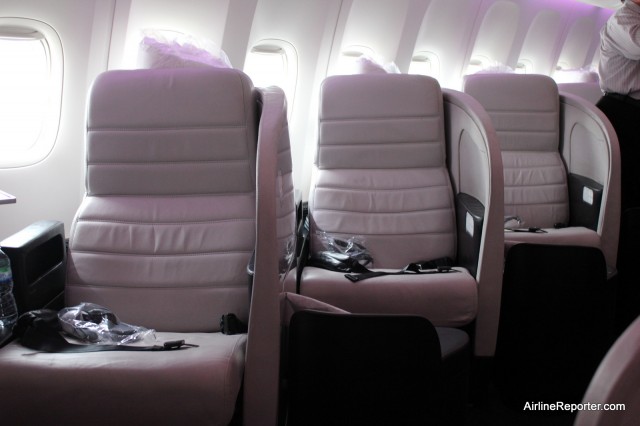
The “window” seats face away from the window, which isn’t so great for AvGeeks, but does provide more privacy.
Earlier, I posted my experience flying Air New Zealand’s Premium Economy from LAX to LHR. I was impressed with the product and was looking forward to how their Business Premium would compare (note: the airline covered my airfare and I paid the taxes). There are many similarities between Premium Economy and Business Premiere, but there are also key differences. Both can check-in at a priority line, get free alcoholic beverages and priority boarding. The extra money spent to upgrade will get you lounge access, premium wines on board, additional food options, a larger screen (10.6″ vs 12.1″) and a fold flat bed.
This was actually my second flight on Air New Zealand’s Business Premier, but only my first “real” one. My previous experience was taking the airline’s first Boeing 777-300ER from Paine Field down to Los Angeles, which was only a 2.5hr media flight. I was happy to try out the product in a “real world” situation and I had a good 10.5 hours to do it. Are the extra features and product worth the ticket premium (or miles)? I think it depends on how you want your flight experience to go.
When first walking into the cabin, it is obvious that the Business Premier class is an upgrade. Instead of a 2-2-2 layout in Premium Economy, Business gives you a 1-2-1 layout, but really it feels more like a 1-1-1-1 set up since you are so isolated.
If you are traveling with someone else, you won’t be able to easily interact while sitting in your seat, but have no worries. The seats easily allow two people to sit and talk at the same seat. This isolation also gives every passenger access to the aisle, which means you don’t have to crawl over someone while they sleep to use the bathroom.
Each of the seats is angled to give passengers extra privacy. The biggest downside is not being able to look out the window with ease. Where the Premium Economy seat actually tilts you towards the window, the Business Premier tilts you away. Although I enjoy looking out the window, I much rather have the privacy and space, since the windows are shut after take off anyhow.
Now, the purpose of my flight was to check out the product, but I ran into a big problem… I fell asleep… for over six hours. That might be one of the best compliments when reviewing an airline’s product, right?
At first I was a bit confused about the seat. I kept hitting the recline button, but the seat would only recline so far. Turns out, it is one of those seats where you have to get up and fold down the bed. What a great Airline Reporter I am, not paying attention and thinking my seat was broken for a few minutes — oh well.
Yes, it takes a bit more of an effort to convert your seat into a bed, but I think it ends up being worth it. Once you have your seat folded forward, you are able to put a memory foam mattress on top. Then add the fluffy duvet and full size pillows and you are ready for a good night’s (or day’s) sleep. If you have any trouble or want some help, just hit the call button and the flight attendants will have no problem assisting.
I had plenty of room to roll around and get into multiple positions. If needed, I was given an eye mask to block out the light, but I didn’t need it. The soft glow of pink lighting was perfect for setting a sleeping mood.
This broke a record for me, since previously, the longest I have slept on a flight was four hours straight. I wasn’t even that jet-lagged, since I had a week in London and was more or less caught up on sleep. Oh well. That still gave me four hours to check out the product, food and drinks.
The meal service started shortly after take off (and before I went to sleep). I decided to watch the movie, Up in the Air (it seemed appropriate) and enjoy my meal. I started with coconut prawns with rice noodles and plum sugar dressing. Then I had a choice between lamb, salmon, chicken or eggplant. I decided to go with the lamb that was on cabbage and potato mash with field mushrooms and minted yoghurt. All amazing.
Then I finished it off with a little vanilla and chocolate ice cream. On my previously flight, dessert was served with the appetizer, which was a bit odd for me, but this time, it came after the meal with some dessert wine.
When I woke up, the cabin was still in sleep-mode and I was thirsty. I was able to fire up the ‘ol in-flight entertainment system and order from a nice selection of food and drinks. I decided on some Diet Coke and sparkling water. The cool part is I was able to customize how my drink was served. Why, yes, I will take ice in both and a lemon wedge in my water. Less than a minute later, my drinks were delivered.
Near the end of the flight, we were served a second meal, which was quite a bit lighter. I had a choice of smoothie, fruit, wraps or scones.
When I received my ticket to fly, the Business Premiere section was filled. I was hoping to get a window seat, but there were none left. Even after checking multiple times before the flight and again at check-in, there were still no other seats. I would have preferred not sitting in the first row, since many times, when my feet were up, the curtain would hit them anytime anyone passed.
So, is upgrading to Business Premiere worth the additional money over Premium Economy? Well, that depends. If you need to sleep well, there is no question that it is worth more. However, if your game plan is to stay up the entire flight and maybe talk to the person next to you, then maybe Premium Economy will do what you need.
But the fact that on average, Business Premiere seats cost $4000-5000 and Premium Economy cost $2000-$2500, that is not a bad deal. Especially when you compare these products to other international seats that cost much more. If you are a person who has the ability to either pay or use miles to upgrade to the front of the plane, it will be hard to find an upgrade per dollar that gives you this good of a deal.
ADDITIONAL PHOTOS OF AIR NEW ZEALAND’S BUSINESS CLASS:
[nggallery id=17]
VivaColombia (5Z), according to their website, is “the first and only low-cost airline of Colombia.” They started in May of 2012 and operate a fleet of four Airbus A320s that service nine Colombian destinations.
They hope to grow their fleet by three additional A320s, all configured in a snug 180 seats, and expand to destinations in Central, South and North America.
The livery is simplistic and has different color balls, representing the three colors of the Colombian flag. I think the livery looks okay, but would probably look better on the shorter A319 or A318.
If the design looks familiar, probably because it is the same concept used by VivaAerobus, based in Mexico. Both airlines have some common investors, which explains the “stolen” livery design. I think it comes off better on the shorter Boeing 737-300 of VivaAerobus versus the longer A320.
Yesterday was a beautiful day at Paine Field to take a look at United Airline’s first Boeing 787 Dreamliner. This was not a delivery ceremony, but a celebration that the aircraft (reg N20904) is out of the paint booth and one step closer to being delivered.
United is expecting to take delivery of their 787 sometime in September. The terminology used yesterday makes me think the plane might be delivered closer to the beginning of the month than the end — we shall see.
I arrived to Paine Field at about 9am to check in. All the media had their equipment quickly sniffed by a Boeing security dog (one of the best parts of the event) and we took a short bus ride to the compass rose, where the airplane was waiting.
There was a tent set up where United employees, VIP mileage members, invited guests and media waited. Before the event officially started, the media was able to take photos of the Dreamliner. It was difficult to sit down to listen to the speeches — I was itching to get on board.
During the speeches, United had some good things to say. David Hilfman, United Airlines senior VP of sales stated, “We have been awaiting this day for a while. And it has been worth every bit of the wait.” It is obvious that the airline is very excited about their new aircraft.
In the middle of the speeches, everyone was in awe, when a Boeing Dreamlifter took off in the background, to a cheering crowd.
Soon, it was time to board. I have been lucky enough to get on JAL’s 787, Qatar’s and a few of ANA’s Dreamliners previously which puts me in a pretty good position to compare United’s interior versus the others.
My first surprise was the entry way. One of the things touted by Boeing about the Dreamliner is the ability to have a dramatic bar entry way (example of JAL’s). When boarding in the second set of doors on the United 787, you are greeted by one of the galleys, not an impressive entry way.
It isn’t bad and most passengers probably won’t notice, but it was a bit of a surprise. I talked to one of United’s VPs of Marketing and he explained the choice provides more space in the cabin. Read: probably a bean-counter’s decision to add more seats. It could be a smart move, since it is not clear yet how much these open bar areas will be used by passengers during flight on other airline’s Dreamliners.
After entering, I headed to check out the Business First product. There are 36 of the seats configured in a 2-2-2 layout. The product looked clean and for the few minutes I sat in the seat, it was comfortable. The non-shared armrest in each seat is able to be lowered, providing a nice addition of width when sitting or sleeping.
There is plenty of storage space and with 68″ of seat pitch, even the tallest passengers can get comfortable. The only down side that I could see is that the center divider between seats cannot be lowered. It is small enough to still be able to talk to the person next to you, but not large enough to give you a level of privacy that competing products have.
All the Business Premier seats have a slight tilt. With the left side seats tilting to the left and the center and right hand seats tilting to the right. This allows additional space and privacy for passengers.
Going farther back in the 787, you first come across 72 seats in Premium Economy and another 111 seats in Economy. United has decided to configure their Dreamliner in a 3-3-3 layout. The seats were comfortable, for the few minutes I sat in them, but not sure how a ten hour flight would go. Each seat on the plane has its own in-flight entertainment, which will offer a distraction for passengers not able to sit in a premium seat.
As with all 787 Dreamliners, United’s has the LED lighting, dimming windows, lower pressurized cabin and improved economics.
A tour of a 787 Dreamliner would not be complete with out a visit up to the flight deck. Between airlines, there is almost no different of the flight decks. I have been told that really the only main difference is a screen view from airlines that use the Rolls Royce Trent 1000 versus the GEnx engine.
One part of the 787 Dreamliner I have not been able to check out yet was the rear crew rest area, which is located above the main cabin. I would have to say that it gets the job done, but surely is not super roomy.
There is no question for me that United’s 787 is a nice product. However, it is far from revolutionary. Still, I don’t think this is United’s fault. My guess is the carrier wanted to premiere their new Business First product on the 787, but due to the delays, they have already installed the product on 777s and 767s. Heck, even the 767s are getting a better in-flight entertainment system than the first 787s will have.
Currently, the only route that United has announced for their 50 Dreamliners has been Denver to Tokyo. The first commercial flight for United will be sometime in October.
A special thanks to Mal Muir for helping me at the event.
UNITED AIRLINES FIRST BOEING 787 DREAMLINER PHOTO GALLERY:
[nggallery id=18]
MORE STUFF TO CHECK OUT:
* Even more photos on my Flickr page
* Epic video from United with Rhapsody in Blue
* Video of the 787 Dreamliner coming out of the paint hangar
